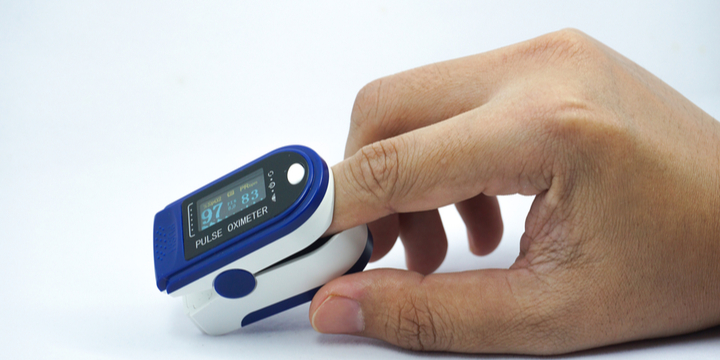What is an oximeter?
The oximeter is an object that is used to measure saturation in the blood. This apparatus is a good reflection of the oxygenation of the blood and therefore of the efficiency of respiratory exchanges.
Dr Bruno Stach, pulmonologist, president of the national union of the respiratory system, and member of the French federation of pneumology explains that according to him the use of the oximeter is completely recommended. It is especially important for people positive for COVID and already considered fragile, people over 65, diabetics, people with obesity, etc.
The oximeter, an alert system
Between the 6th and the 12th day following the onset of symptoms, it sometimes happens that people who were so far little affected suffer quite suddenly from respiratory decompensation, that is to say a drop in the level. oxygen in the blood.

This can go very quickly, they then find themselves in distress, with difficulty in breathing. It is this decompensation, often brutal, which is the first cause of hospitalization and resuscitation.
In this case, the pulse oximeter, by allowing you to monitor your blood oxygen, can alert you a little bit before the seizure occurs that something is going wrong.
It is therefore an alert which is extremely important and which can be very useful. This device can really bring more. It was also recommended by the WHO quite early at the start of the epidemic.
How to choose this device?
To choose your device, it is strongly recommended to buy it from a health professional, in pharmacies for example, and to avoid the gadgets sometimes found online.
The prices are very variable, it goes from 25 euros for the cheapest to a hundred euros but it is not reimbursed … There are several criteria on which we must be vigilant according to the HAS, the High Authority of Health.
You have to look if you find the CE marking and the mention of the ISO: 8061261 standard which guarantees the quality of the oximeter, even if in fact, few devices display it, so it is really the healthcare professional who can confirm it and above all give you the right advice.

How to properly use the oximeter?
We must be careful to follow the right actions for the results to be reliable and effective. Here is how to do it:
- You have to put the device on your middle finger.
- Above all, do not wear nail polish which risks falsifying the measurement.
- Stay calm for at least a minute.
- You must also pay attention to the measurements taken in the morning when you wake up. The oxygen saturation rate is always a little lower at this time, so it is better to wait a little while before measuring.
- For the frequency of monitoring: it is at least 3 times a day, until D14 after the onset of symptoms or the result of the test.

Once all of that is done, you write these numbers down to share with your doctor.
How to read the results? When to worry
Ideally, your doctor should teach you how to read the results correctly when prescribing the oximeter for you, or your pharmacist at the time of purchase, or a nurse.
To be able to read your results on your own and react well, here are some elements.
There are two numbers displayed: the saturation at rest and the pulse rate. The one you will be interested in is the oxygen saturation figure which is displayed as a percentage.

- In someone in good health: saturation should be above 95% at rest. (Between 95 and 100%)
- According to Dr Bruno Stach, if you see a decrease below 94-95% it is not a good sign, especially if the drop is sudden and your saturation level drops by more than 3 points.
- Below 90%, you are in a pathological situation.

If the measurement is low, it is best to repeat the measurement to make sure it was done correctly. If the result is confirmed, you must quickly call your referring doctor or directly on 15.
You will tell them these numbers, along with any symptoms you are suffering from, especially if there is difficulty breathing.
The oximeter makes it possible to react very quickly in the event of desaturation and to be taken care of more quickly in the event of respiratory complications.
 Cherry tomatoes contaminated with salmonella: 92 sick and 1 dead
Cherry tomatoes contaminated with salmonella: 92 sick and 1 dead  A better coaching method can make a person grow
A better coaching method can make a person grow  What is the method to prevent diabetes in children?
What is the method to prevent diabetes in children?  What are the effective factors in causing stomach ulcers?
What are the effective factors in causing stomach ulcers?  Why do embarrassing memories seem to appear at night?
Why do embarrassing memories seem to appear at night?  The amazing link between SARS-CoV-2 infection and newly started diabetes
The amazing link between SARS-CoV-2 infection and newly started diabetes  WHO says monkey pox is not a global emergency right now
WHO says monkey pox is not a global emergency right now  Single cell RNA sequencing uncovers new mechanisms of heart disease
Single cell RNA sequencing uncovers new mechanisms of heart disease  Hepatitis of unknown origin: 3 new deaths and 228 cases worldwide
Hepatitis of unknown origin: 3 new deaths and 228 cases worldwide 